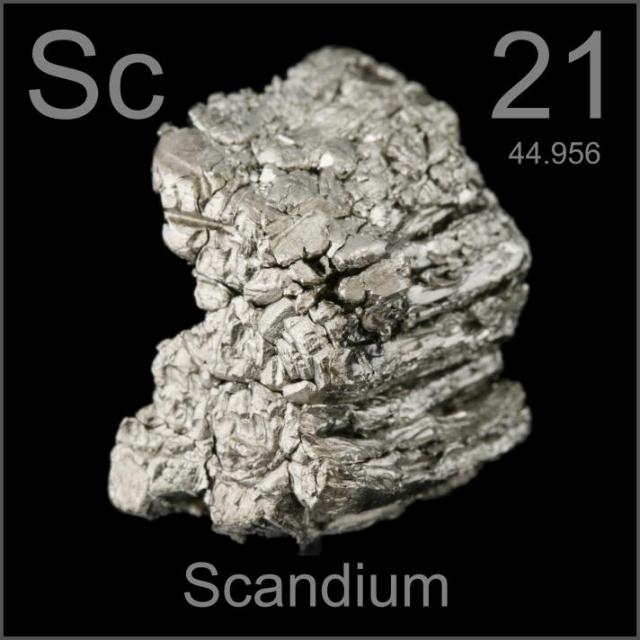Atomic number | 21 |
Atomic mass | 44.9559 g.mol -1 |
Electronegativity | unknown |
Density | 3.0 g.cm-3 at 20°C |
Melting point | 1541 °C |
Boiling point | 2836 °C |
Vanderwaals radius | 0.161 nm |
Ionic radius | 0.083 nm (+3) |
Isotopes | 7 |
Electronic shell | [ Ar ] 3d1 4s2 |
Energy of first ionisation | 640.5 kJ.mol -1 |
Energy of second ionisation | 1233 kJ.mol -1 |
Energy of third ionistion | 2389 kJ.mol -1 |
Energy of fourth ionisation | 7089 kJ.mol -1 |
Discovered by | Lars Nilson in 1879 |
Scandium is a soft, silvery transition element which occurs in rare minerals from Scandinavia. It develops a slightly yellowish or pinkish cast when exposed to air. Scandium tarnished in air and burn easily, once it has been ignited. It reacts with water to form hydrogen gas and will dissolve in many acids. Pure scandium is produced by heating scandium fluoride (ScF3) with calcium metal.
Applications
Scandium is one of the rare chemicals, that can be found in houses in equipment such as colour televisions, fluorescent lamps, energy-saving lamps and glasses. The use of scandium is still growing, due to the fact that it is suited to produce catalysers and to polish glass.
The main application by volume is in aluminium-scandium alloys for the aerospace industry and for sports equipment (bikes, baseball bats, etc.) which rely on high performance materials. It has been shown to reduce solidification cracking during the welding of high strength aluminium alloys.
